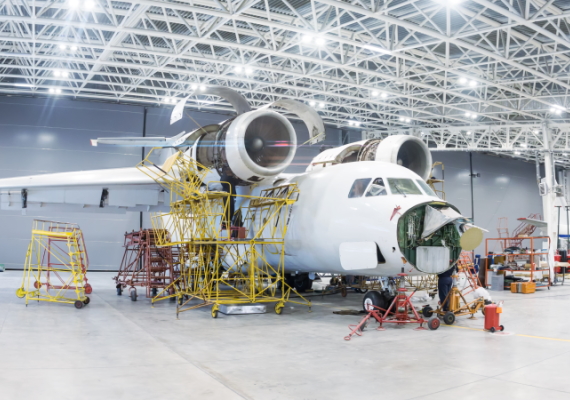
PUNC - Usage Clause
As we discussed in last month’s post, ‘PUNC’ (Pilots, Use, Named Insured and Contracts) is an acronym capturing the four most important areas of aviation insurance that result in the largest percentage of claims denials. This month, we review the Usage Clause.
In 2005, a Challenger 600 ran off the departure end of New Jersey’s Teterboro Airport (TEB) at a ground speed of about 110 knots; smashed through an airport perimeter fence; carried across a six-lane highway (where it struck a vehicle) and into a parking lot before impacting a building. The two pilots were seriously injured, as were two occupants in the passing automobile. The cabin aide, eight passengers, and one person in the building received minor injuries. The airplane was destroyed by impact forces and post-impact fire.
According to the NTSB, contributing to the accident was the operator’s conduct of charter flights without proper Federal Aviation Administration (FAA) certification--perilous words from an insurance perspective. Technically a Part 91 non-commercial operator was conducting a Part 135 charter flight.
Many aircraft owners allow friends and business associates to use their aircraft provided they are reimbursed at an agreed-upon rate. Others dry lease their aircraft to affiliate companies on a per-hour basis. These owners should pay particular attention to the following discussion.
The Usage Clause
One of the least understood (and therefore most dangerous) clauses in an aviation insurance policy is the Approved Use clause. This provision spells out exactly what use [commercial or non-commercial] the insurance carrier has agreed to cover.
The corresponding definition of the agreed-upon use will also detail the “compensation” an aircraft owner may receive for the operation of his/her aircraft. Particularly with respect to aircraft written for nonc use, the allowable reimbursement can vary widely.
‘Pleasure & Business’
Non-Commercial Approved Use clauses are often worded differently, with the most basic and restrictive clause: “pleasure & business,” which means used in the business of the insured including personal and pleasure but excluding any operation for hire or reward. Cost reimbursement shall be included within the definition of pleasure and business, provided that such cost reimbursement is limited to:
- Fuel, oil, lubricants, and other additives
- Travel expenses of the crew, including food, lodging and ground transportation
- Hangar and tie-down costs away from the aircraft’s base of operation
- Insurance obtained for the specific flight
- Landing fees, airport taxes and similar assessments
- Customs, foreign permit, and similar fees directly related to the flight
- In flight food and beverages
- Passenger ground transportation
- Flight planning and weather contact services
- An additional charge equal to 100% of the expenses listed in subparagraph (1) of this paragraph
Note that the clause excludes any operation for hire or reward. In other words, any exchange of goods or services (whether a case of your favorite wine or a week at a friend’s vacation home) violates the terms of the policy.
You may be calculating the per hour operating cost of your aircraft including reserves for maintenance, engine overhaul, insurance, and hangar expense, etc., and applying this figure when seeking reimbursement for aircraft usage. With the above pleasure and business usage clause, however, reimbursement is strictly limited to the cost of the items listed above. That’s it. Any reimbursement in excess would void the usage clause. In our case example, this clause would have been a basis for claim denial.
‘Knowledge & Consent’
“The Policy shall not apply to any insured while the aircraft is being used with the knowledge and consent of such Insured for any purpose involving a charge intended to result in financial profit to such Insured unless otherwise indicated herein.”
This allows full reimbursement of operating expenses provided the charge isn’t intended to result in financial profit. Again, there would have been no coverage under our case example with this usage clause since it was flown as a commercial charter.
Why are insurers so focused on commercial vs. non-commercial? Because in the eyes of the law, an entity engaged in a commercial operation owes a much higher standard of care to the public. The courts will hold the commercial operator [and therefore the insurance company] much more strictly liable than a non-commercial operator.
‘All Operations of the Named Insured’
This usage clause is normally reserved for an insurer’s best non-commercial corporate flight departments. It allows maximum flexibility on reimbursement for aircraft operations. If you can get it, this is the one you want.
In our case example, this is the only clause that might have validated coverage under the policy regarding the cited charter operation by a Part 91 operator. Note, however, that the FAA prohibits flights for hire or reward unless the operator holds a Part 135 certificate. Thus, be assured that your coverage does not become invalid if your flight department inadvertently violates the Federal Air Regulations.
Remember the ‘PUNC’ recommended checklist. The importance of the Usage Clause cannot be overstated. Contact AssuredPartners Aerospace if you are unsure what your clause states. Be sure to communicate to your flight department precisely what is allowable and thus insured. It may seem like splitting hairs, but rest assured it won’t after a loss. Next month we’ll address the “N” in PUNC.

Related articles

Lorem ipsum dolor sit amet, consectetur adipiscing elit. Nullam elit quam, imperdiet sed ex quis, tempor luctus quam. Class aptent taciti sociosqu ad litora torquent per conubia nostra, per inceptos...

You are completing the third leg of what has been a successful business trip, and as the plane touches down, there is a loud “thunk.” The pilot successfully maintains control of the aircraft and...
